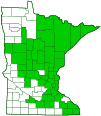downy Parlin’s pussytoes
(Antennaria parlinii ssp. fallax)
Conservation • Description • Habitat • Ecology • Use • Distribution • Taxonomy
Conservation Status |
|
|||||||
| IUCN Red List | not listed |
|||||||
| NatureServe | NNR - Unranked SNR - Unranked |
|||||||
| Minnesota | not listed |
|||||||
Description |
||
Downy Parlin’s pussytoes is an erect, perennial forb that rises on a basal rosette of leaves and a flowering stem from a rhizome and stolons. It can be from 4″ to 17¾″ in height, though it is usually no more than 16″ tall. It often forms colonies. The stolons are 1⅜″ to 4⅓″ long, densely woolly, and leafy. They recline on the ground with the tips ascending. They root at the nodes, forming new plants. Basal leaves are spoon-shaped, 1″ to 3¾″ long, and ¾″ to 1¾″ wide. They are rounded or broadly pointed at the tip, and sometimes have a small, abrupt, sharp point at the tip. They taper gradually to the leaf stalk at the base. There are 3 or 5 prominent veins extending from the base to the broadest part of the blade. The upper surface is moderately to densely covered with white, short, matted or tangled, soft, woolly hairs, giving it a woolly or felt-like texture. It usually becomes less hairy at maturity but not hairless or nearly hairless. The lower surface is densely covered with white, short, matted or tangled, soft, woolly hairs. The hairiness of the lower surface persists at maturity. The margins are untoothed. Basal leaves are often evergreen. Stem leaves are alternate, linear to narrowly lance-shaped, and 3 ⁄16″ to 1¾″ long. They taper to a sharp point at the tip and attach to the stem at the base without a leaf stalk. The lowermost leaves are often narrowly inversely egg-shaped. The upper leaves often have a short, hairlike extension of the midvein at the tip. The upper and lower surfaces are densely covered with white, short, matted or tangled, soft, woolly hairs. The flowering stem can be 3½″ to 17¾″ tall, though it usually reaches no more than 11″ in height. It is erect, sparsely leafy, and densely covered with white woolly hairs. It sometimes becomes hairless in patches with age. There are no purple glandular hairs near the top of the stem. The inflorescence is a tight, round-topped cluster of 4 to 12 flower heads at the end of the stem. Male and female flowers are borne on separate plants. A population of plants may have both male and female plants, or female plants only. The whorl of bracts (involucre) subtending a flower head on male (staminate) plants is ¼″ to ⅜″ long. The involucre on female (pistillate) plants is 5 ⁄16″ to ½″ long. The flower heads have 20 to 100 white or pinkish, tubular disk florets and no ray florets. Male florets are ⅛″ to 3 ⁄16″ long. Female florets are ⅛″ to ¼″ long. The fruit is a small achene with hairs at the tip. There is no floral scent. |
||
Height |
||
4″ to 17¾″ |
||
Flower Color |
||
White to pinkish |
||
Similar Species |
||
Antennaria parlinii is the only pussytoes species in Minnesota with flowering stems that can be more than 13¾″ in height. smooth Parlin’s pussytoes (Antennaria parlinii ssp. parlinii) stems have purple glandular hairs near the top of the stem. Basal leaves are sparsely hairy or hairless on the upper surface. The hairs on the basal leaves are more cobwebby than woolly. They become hairless or nearly hairless at maturity, not simply less hairy. It is very rare in Minnesota, having been recorded only in Chisago County. Field pussytoes (Antennaria neglecta) has a shorter flowering stalk, usually no more than 8″ tall. The basal leaves are shorter, no more than 2½″ long, and narrower, less than ¾″ wide. They have only a single prominent vein, occasionally also a faint pair of parallel lateral veins. Plantain-leaved pussytoes (Antennaria plantaginifolia) stolons tend to be shorter, 1″ to 3″ long. Young stolons are ascending. In pistillate plants the involucre is shorter, 3 ⁄16″ to ¼″ long. In Minnesota, it is found only in the driftless area in the extreme southeast. |
||
Habitat |
||
Dry to moderate moisture. Open woods, upland prairies, savannas, bluffs. |
||
Ecology |
||
Flowering |
||
April to June |
||
Pests and Diseases |
||
|
||
Use |
||
|
||
Distribution |
||||
|
Sources |
|||
| 3/21/2023 | ||||
Nativity |
||||
Native |
||||
Occurrence |
||||
Common |
||||
Taxonomy |
|||
| Kingdom | Plantae (Plants) | ||
| Division | Tracheophyta (Vascular Plants) | ||
| Subdivision | Spermatophytina (Seed Plants) | ||
| Class | Magnoliopsida (Dicots) | ||
Order |
Asterales (Sunflowers, Bellflowers, Fanflowers, and Allies) | ||
Family |
Asteraceae (Sunflowers, Daisies, Asters, and Allies) | ||
| Subfamily | Asteroideae | ||
| Supertribe | Asterodae | ||
| Tribe | Gnaphalieae (paper daisies) | ||
| Subtribe | Gnaphaliinae (cudweeds, everlastings, and pussytoes) | ||
| Genus | Antennaria (pussytoes) | ||
| Species | Antennaria parlinii (Parlin’s pussytoes) | ||
Subordinate Taxa |
|||
|
|||
Synonyms |
|||
Antennaria ambigens Antennaria ampla Antennaria arkansana Antennaria arnoglossa var. ambigens Antennaria bifrons Antennaria brainerdii Antennaria callophylla Antennaria calophylla Antennaria elliptica Antennaria fallax Antennaria fallax var. calophylla Antennaria farwellii Antennaria greenei Antennaria mesochora Antennaria munda Antennaria occidentalis Antennaria parlinii var. ambigens Antennaria parlinii var. farwellii Antennaria plantaginifolia var. ambigens Antennaria umbellata Antennaria unbellata |
|||
Common Names |
|||
Parlin’s pussytoes plantain pussy-toes plantain-leaved pussytoes woman’s tobacco |
|||
Glossary
Glandular hairs
Hairs spread over aerial vegetation that secrete essential oils. The oils act to protect against herbivores and pathogens or, when on a flower part, attract pollinators. The hairs have a sticky or oily feel.
Involucre
A whorl of bracts beneath or surrounding a flower, flower head, or flower cluster.
Linear
Long, straight, and narrow, with more or less parallel sides, like a blade of grass.
Node
The small swelling of the stem from which one or more leaves, branches, or buds originate.
Pistillate
Referring to a flower that has a female reproductive organ (pistil) but does not have male reproductive organs (stamens).
Rhizome
A horizontal, usually underground stem. It serves as a reproductive structure, producing roots below and shoots above at the nodes.
Staminate
Referring to a flower that has a male reproductive organs (stamens) but does not have a female reproductive organ (pistil).
Stolon
An above-ground, creeping stem that grows along the ground and produces roots and sometimes new plants at its nodes. A runner.
Visitor Photos |
|||||
Share your photo of this plant. |
|||||
| This button not working for you? Simply email us at info@MinnesotaSeasons.com. Attach one or more photos and, if you like, a caption. |
|||||
Luciearl |
|||||
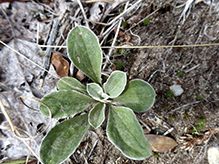 |
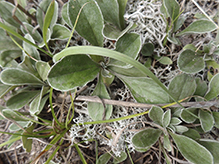 |
||||
MinnesotaSeasons.com Photos |
|||||
Colony |
|||||
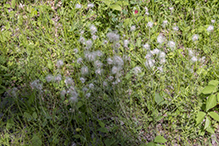 |
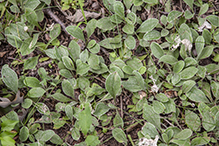 |
||||
Plant |
|||||
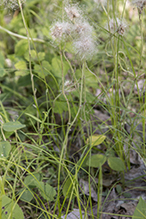 |
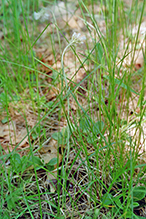 |
||||
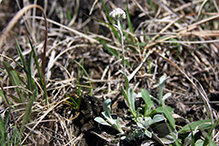 |
|||||
Inflorescence |
|||||
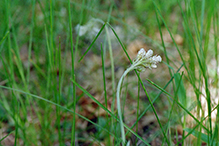 |
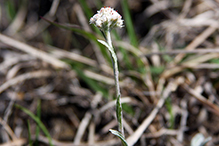 |
||||
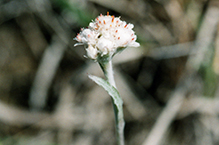 |
|||||
Basal Leaves |
|||||
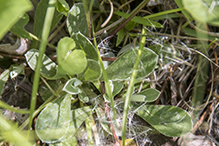 |
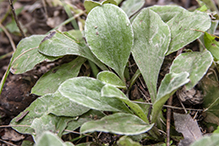 |
||||
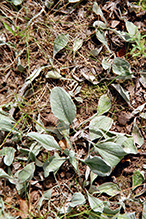 |
|||||
Leaf Underside |
|||||
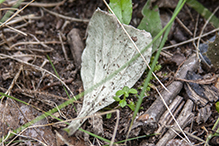 |
|||||
Infructescence |
|||||
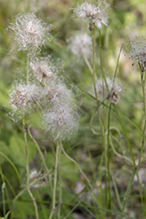 |
|||||

Slideshows |
||

Visitor Videos |
|||
Share your video of this plant. |
|||
| This button not working for you? Simply email us at info@MinnesotaSeasons.com. Attach a video, a YouTube link, or a cloud storage link. |
|||
Other Videos |
|||


|
Created: Last Updated: © MinnesotaSeasons.com. All rights reserved. |
